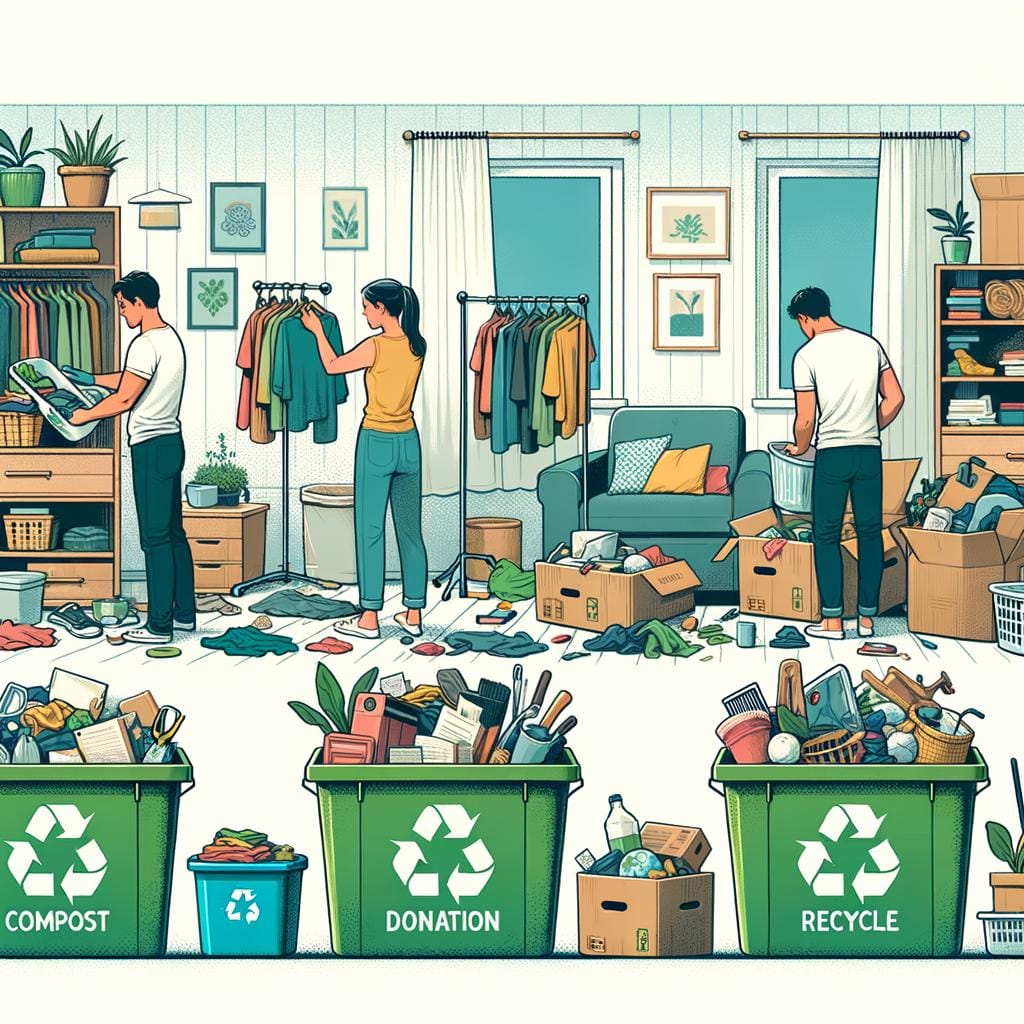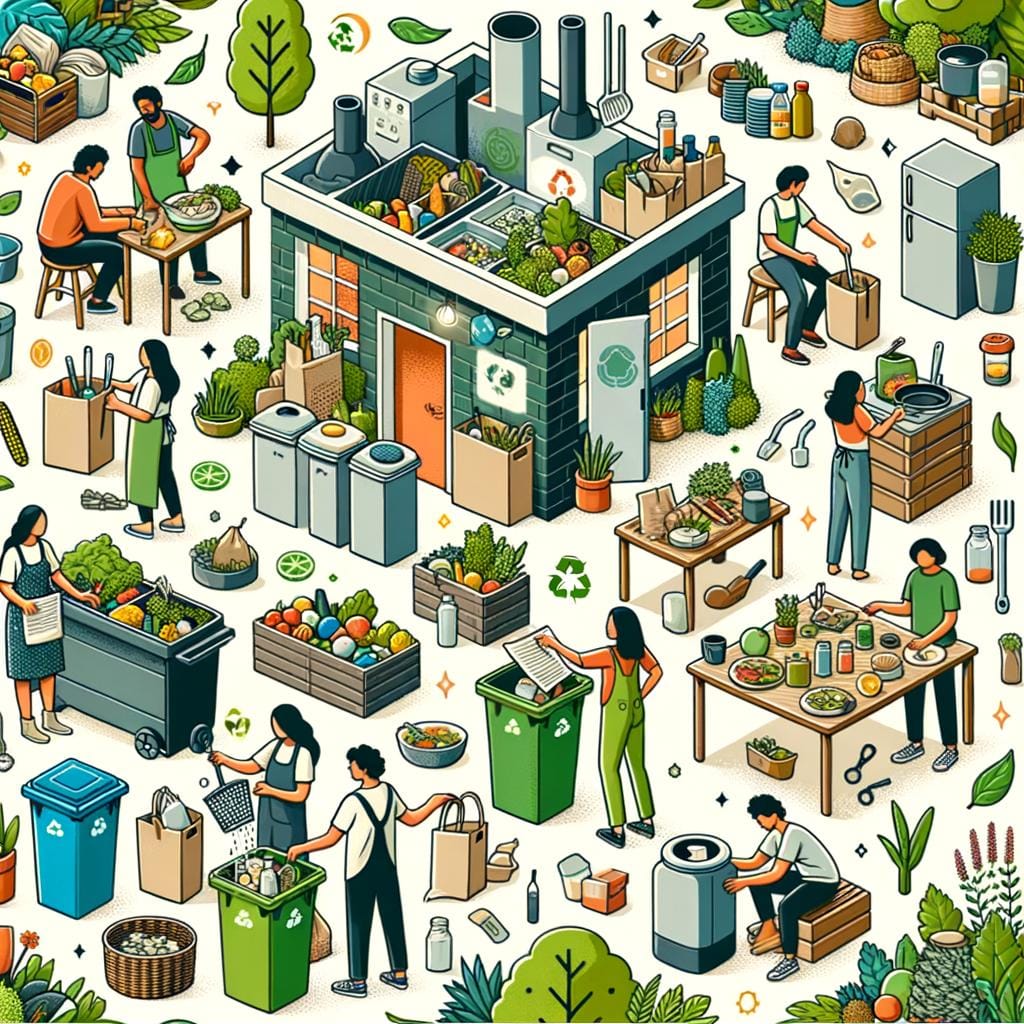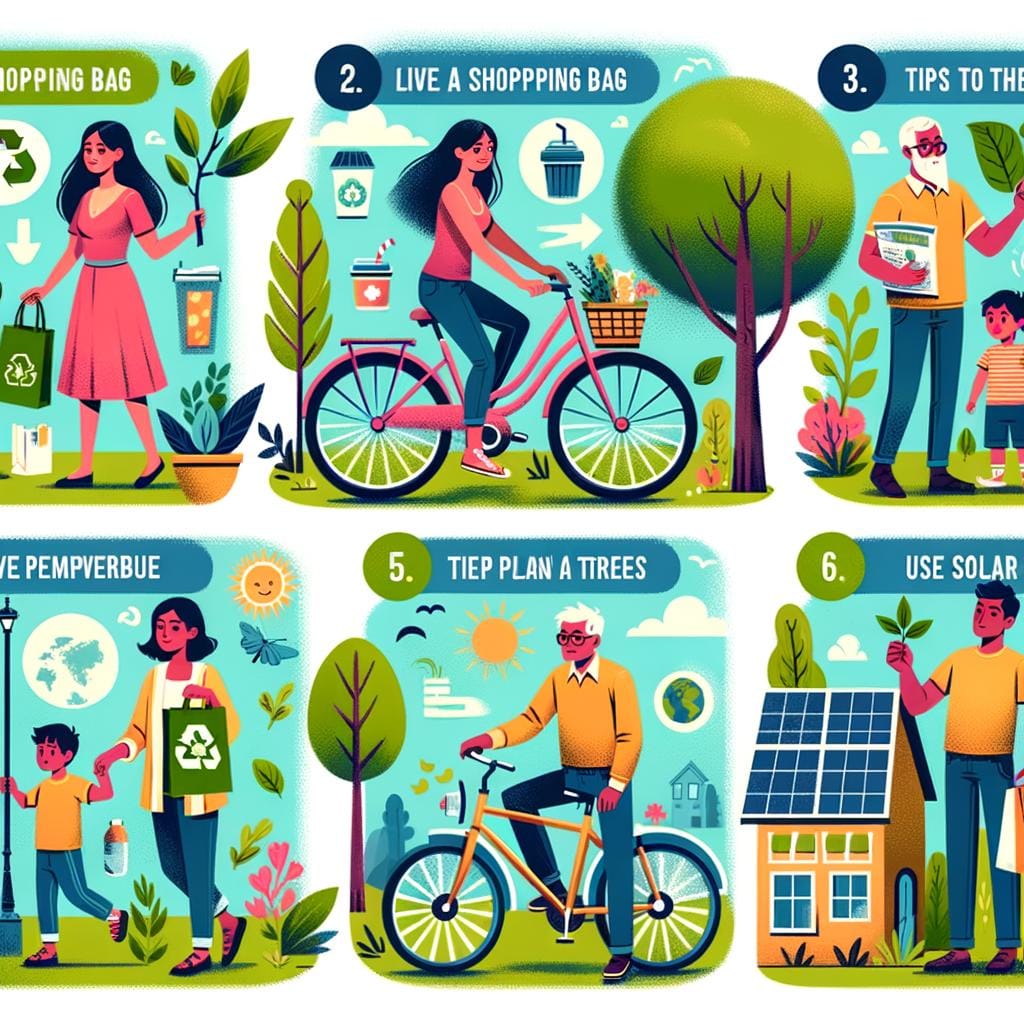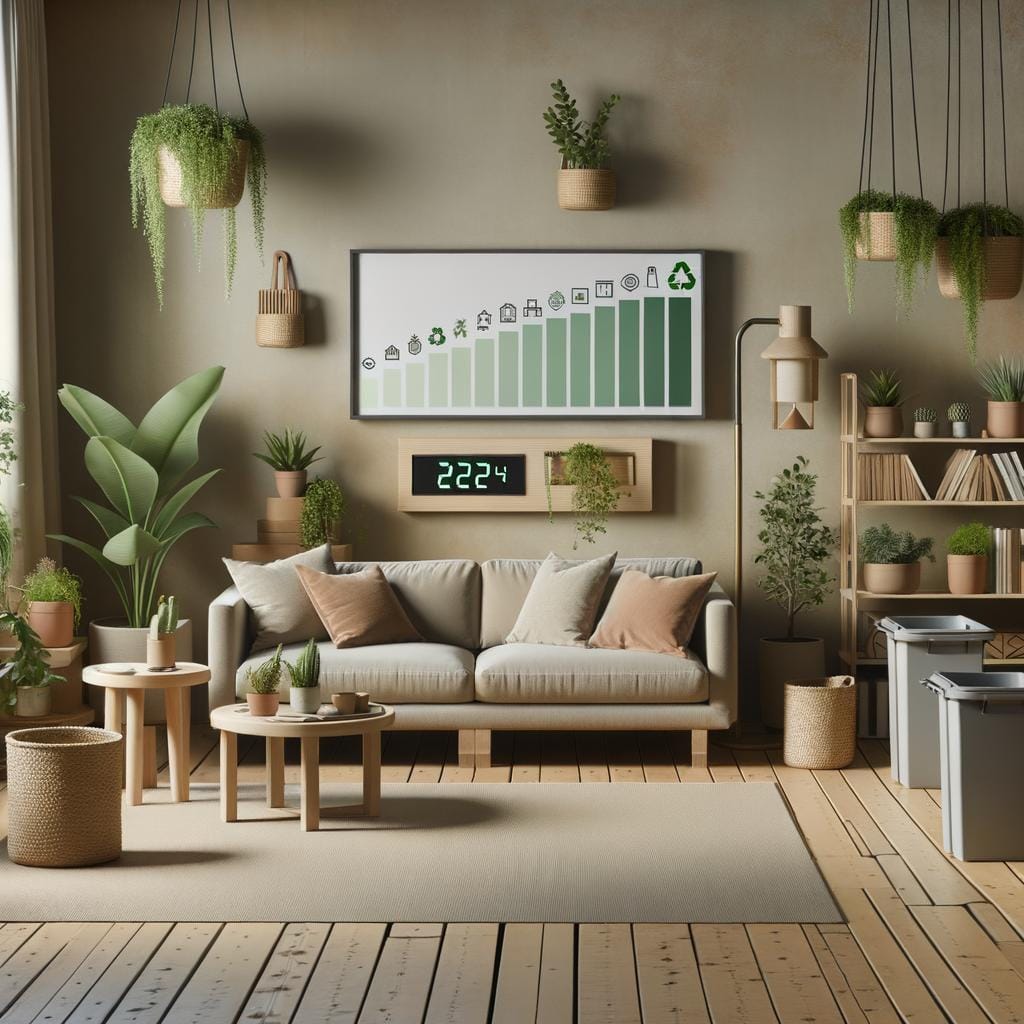Are you looking to declutter your space while also being environmentally conscious? Implementing green decluttering practices can help you achieve both goals simultaneously. By incorporating sustainable and eco-friendly methods into your decluttering process, you not only create a more organized living environment but also reduce your carbon footprint and contribute to a healthier planet.
Green decluttering practices involve making intentional decisions about what items to keep, donate, or recycle in a way that minimizes waste and promotes sustainability. This approach goes beyond just tidying up your space; it’s about adopting a more mindful and eco-conscious lifestyle that prioritizes the well-being of the environment.
In this article, we will explore the benefits of green decluttering practices, the importance of sustainable living, tips for eco-friendly decluttering, choosing natural and biodegradable organizing products, repurposing and upcycling items, minimalist approaches to green living, incorporating indoor plants into home organization, as well as donation and recycling options for unwanted items. Let’s delve into how you can embrace a greener lifestyle through your decluttering efforts.
Benefits of Green Decluttering Practices
Green decluttering practices not only help create a more organized living space, but they also have numerous benefits for the environment and overall well-being. By incorporating eco-friendly methods into your decluttering process, you can make a positive impact on the planet while improving the quality of your home environment.
Reducing Waste and Landfill Contributions
One of the key benefits of green decluttering practices is the reduction of waste and minimizing contributions to landfills. By consciously choosing to donate, recycle, or repurpose items instead of simply throwing them away, you are helping to decrease the amount of trash that ends up in landfills. This mindful approach not only lessens environmental harm but also promotes a more sustainable lifestyle.
Promoting Sustainable Consumption
Engaging in green decluttering practices encourages individuals to reconsider their consumption habits and be more mindful of what they bring into their homes. By prioritizing quality over quantity and investing in items that are durable and environmentally friendly, you can reduce your carbon footprint and support sustainable production practices. This shift towards conscious consumerism contributes to a healthier planet in the long run.
Improving Indoor Air Quality
Another significant benefit of green decluttering practices is the potential to improve indoor air quality. Cluttered spaces can harbor dust, allergens, and pollutants, which can negatively impact respiratory health.
By reducing clutter and opting for natural organizing products, such as bamboo organizers or recycled cardboard storage containers, you can create a cleaner and healthier living environment for yourself and your family. Embracing green decluttering practices is not only beneficial for the environment but also enhances personal well-being by promoting a cleaner, more sustainable lifestyle.
Importance of Sustainable Living
Sustainable living is becoming increasingly important in today’s world where environmental issues are at the forefront of discussions. One key aspect of sustainable living is incorporating green decluttering practices into our daily lives. By being mindful of the impact our decluttering habits have on the environment, we can contribute to a more eco-friendly lifestyle and help minimize waste.
Reducing Environmental Impact
Green decluttering practices focus on reducing waste and minimizing the environmental impact of our consumption habits. When we declutter in a sustainable manner, we are not only clearing out our space but also making conscious choices about how we dispose of unwanted items. This involves thinking about where these items will end up and whether they can be reused, recycled, or repurposed instead of being sent to landfills.
Promoting Responsible Consumption
Embracing green decluttering practices also promotes responsible consumption by encouraging us to be more mindful of what we bring into our homes. By thinking twice about the things we purchase and considering their long-term impact on the environment, we can make more sustainable choices that contribute to a greener lifestyle. This shift in mindset towards mindful consumption can lead to a more fulfilling and environmentally conscious way of living.
Tips for Eco-Friendly Decluttering
When it comes to decluttering your home, incorporating eco-friendly practices not only helps reduce waste but also contributes to a more sustainable lifestyle. By adopting green decluttering practices, you can make a positive impact on the environment while creating a more organized and harmonious living space. Here are some tips to help you achieve an eco-friendly decluttering process:
- Assess your belongings: Before starting the decluttering process, take stock of your possessions and determine what items you truly need and use regularly. This mindset shift can help prevent unnecessary waste and promote conscious consumption.
- Repurpose or upcycle items: Instead of discarding unwanted items, consider repurposing or upcycling them into something new. For example, old jars can be used for storing pantry items or as decorative pieces, while worn-out clothing can be transformed into cleaning rags or patchwork quilts.
- Audit your cleaning products: When organizing your space, opt for natural and biodegradable cleaning products to minimize chemical exposure and reduce environmental impact. Look for eco-friendly options that are free from harsh chemicals and come in sustainable packaging.
Green decluttering practices not only benefit the planet but also contribute to a healthier home environment for you and your family. By following these tips, you can make a meaningful difference in promoting sustainability and reducing waste in your daily life.
Choosing Natural and Biodegradable Organizing Products
When embarking on a journey towards adopting green decluttering practices, one important aspect to consider is the choice of organizing products. Opting for natural and biodegradable materials not only helps reduce your carbon footprint but also promotes a healthier environment within your home. Traditional organizing products often contain harmful chemicals that can be detrimental to both your health and the planet. By making a conscious effort to select eco-friendly alternatives, you are taking a proactive step towards sustainability.
One popular option for natural organizing products is bamboo. Bamboo is a fast-growing, renewable resource that can be harvested without causing damage to the environment. Bamboo organizers, such as storage bins, trays, and shelves, are sturdy and durable, making them ideal for decluttering and organizing various spaces in your home. Additionally, bamboo has natural antibacterial properties, making it a hygienic choice for storage solutions.
Another eco-friendly alternative to traditional organizing products is cork. Cork is harvested from the bark of cork oak trees without harming the tree itself, making it a sustainable material choice. Cork organizers are lightweight yet durable, making them versatile for use in different areas of your home. From desk organizers to drawer dividers, incorporating cork products into your decluttering process adds a touch of nature while promoting green living practices.
It is essential to remember that every small change counts when it comes to transitioning to a more sustainable lifestyle. By consciously choosing natural and biodegradable organizing products during your decluttering process, you are contributing positively towards creating a greener environment both inside your home and beyond. Making this shift not only benefits the planet but also enhances the overall well-being of you and your family members by reducing exposure to harmful substances found in conventional organizing materials.
| Natural & Biodegradable Organizing Products | Eco-Friendly Benefits |
|---|---|
| Bamboo | Fast-growing renewable resource |
| Cork | Sustainably harvested material |
Repurposing and Upcycling Items
One popular way to repurpose items is by turning old furniture into something fresh and functional. For example, an old bookshelf can be repainted and repurposed as a plant stand, or a worn-out dresser can be refurbished into a chic storage cabinet. By thinking outside the box and getting creative with your DIY projects, you not only save money but also reduce your environmental impact.
Upcycling can involve various materials beyond furniture, such as glass jars, tin cans, or clothing. These items can be transformed into unique home decor pieces, organizers, or even accessories with just a little bit of creativity and effort. By incorporating upcycled items into your home design, you add character and charm while promoting sustainability through green decluttering practices.
| Repurposing Benefits | Upcycling Advantages |
|---|---|
| Reduces waste | Promotes sustainability |
| Creative outlet | Adds character to home decor |
Minimalism and Green Living
Living a minimalist lifestyle goes hand in hand with green living practices, as both emphasize the importance of reducing consumption and waste. By embracing minimalism, individuals can not only declutter their homes but also make more mindful choices about the items they bring into their living spaces. Here are some ways in which minimalism can be integrated with green decluttering practices:
- Focus on quality over quantity: Instead of accumulating multiple items that serve similar purposes, opt for high-quality, durable products that will last longer and reduce the need for frequent replacements.
- Avoid unnecessary purchases: By being mindful of what you truly need versus what is simply a want, you can minimize the amount of unnecessary clutter in your home and reduce your environmental impact.
- Embrace multi-functional items: Choose furniture or decor pieces that serve multiple purposes to maximize functionality and minimize the number of items needed in your home.
Incorporating minimalist principles into your decluttering process can not only create a more streamlined and organized living space but also contribute to a more sustainable lifestyle overall. The concept of “less is more” rings true when it comes to minimizing waste and making eco-friendly choices in our daily lives. By simplifying our surroundings and possessions, we can create a more peaceful environment while reducing our carbon footprint.
Minimalism encourages us to reevaluate our priorities and focus on what truly brings value and joy into our lives. It challenges us to be intentional about our belongings, leading to a greater appreciation for the things we do have rather than constantly seeking more. As we strive towards a greener lifestyle through decluttering practices, embracing minimalism can play a significant role in helping us achieve our sustainability goals.
Incorporating Indoor Plants in Home Organization
Indoor plants not only add a touch of greenery to your home but can also play a significant role in the process of decluttering and organizing your space. By incorporating indoor plants into your home organization, you are not only enhancing the aesthetic appeal of your living environment but also contributing to a more sustainable lifestyle through green decluttering practices.
One of the benefits of incorporating indoor plants in home organization is their ability to purify the air by removing toxins and impurities. This can create a healthier living environment for you and your family, promoting overall well-being. In addition, indoor plants can also help reduce stress, boost mood, and increase productivity, making them an essential element in creating a harmonious and organized living space.
When choosing indoor plants for home organization, opt for low-maintenance varieties that suit the lighting conditions of your space. Consider placing plants strategically in areas where clutter tends to accumulate, such as on shelves or countertops, to not only enhance the visual appeal but also serve as natural dividers or focal points.
By integrating indoor plants into your organizational strategy, you are not only embracing a greener lifestyle but also bringing nature indoors and creating a tranquil atmosphere in your home.
Donation and Recycling Options for Unwanted Items
When embarking on a decluttering journey, it’s crucial to consider the environmental impact of your actions. Instead of simply throwing away items you no longer need or want, opting for donation and recycling options can significantly reduce waste and promote sustainability. By giving your unwanted belongings a second life through donation or recycling, you not only contribute to reducing landfill waste but also help those in need.
Donating items such as clothing, furniture, electronics, and household goods to local charities or organizations can make a positive difference in the community. Many charitable organizations accept gently used items and distribute them to individuals or families in need. Not only does this help declutter your space, but it also allows you to give back to those who could benefit from your donations. Additionally, donating items can also qualify you for tax deductions in some cases.
Recycling is another eco-friendly option for getting rid of unwanted items that may not be suitable for donation. Many municipalities offer recycling programs for various materials such as paper, plastic, glass, and electronics.
By separating recyclable materials from regular trash, you ensure that these items are properly processed and reused instead of ending up in landfills. Embracing green decluttering practices through donation and recycling options is a simple yet impactful way to make a positive environmental impact while organizing your space efficiently.
Conclusion
In conclusion, adopting green decluttering practices not only benefits our immediate surroundings but also contributes to a more sustainable and eco-friendly lifestyle. By incorporating environmentally conscious habits into our decluttering routines, we can reduce waste, minimize our carbon footprint, and promote a healthier planet for future generations to enjoy. The benefits of green decluttering practices extend beyond just organizing our living spaces; they have a positive impact on the environment as a whole.
Sustainable living is becoming increasingly important in today’s world, where climate change and environmental degradation are major concerns. By embracing green decluttering practices, individuals can actively contribute to the preservation of natural resources and the reduction of harmful pollutants in the environment. Making small changes in our daily habits, such as choosing natural and biodegradable organizing products or repurposing items instead of throwing them away, can make a significant difference in creating a greener and more sustainable society.
Incorporating indoor plants into home organization not only adds aesthetic appeal but also promotes better air quality and overall well-being. Donating unwanted items to those in need or recycling materials whenever possible are simple yet effective ways to declutter responsibly.
Ultimately, by making conscious choices in our decluttering efforts, we can cultivate a mindset of minimalism and green living that extends beyond our homes and into our communities. Embracing a greener lifestyle through decluttering practices is not just about tidying up – it’s about making a commitment to sustainability and environmental stewardship.
Frequently Asked Questions
What Is the Rule of 5 Decluttering?
The Rule of 5 decluttering method involves getting rid of five items every day from your living space. This consistent approach helps prevent clutter from accumulating and allows for gradual progress in decluttering.
What Is the 20 20 20 Rule for Decluttering?
The 20 20 20 rule for decluttering is a strategy that involves dividing your possessions into three categories: keep, donate/sell, and trash. By spending 20 minutes on each category daily, you can effectively declutter your home in manageable increments.
What Is the Core 4 Method of Decluttering?
The Core 4 method of decluttering focuses on four main areas within a living space: flat surfaces, floors, storage areas, and walls/ceilings. By prioritizing these key zones, individuals can systematically tackle clutter and create a more organized environment.

Hello, I’m April Denton, your go-to expert for all things home decluttering and organization. With over a decade of experience helping individuals transform their living spaces into serene, clutter-free sanctuaries, I am passionate about the life-changing benefits of decluttering. My journey into the world of organization began out of necessity, juggling a busy career and a bustling household. I quickly realized that a well-organized home was the key to a more balanced, stress-free life.





